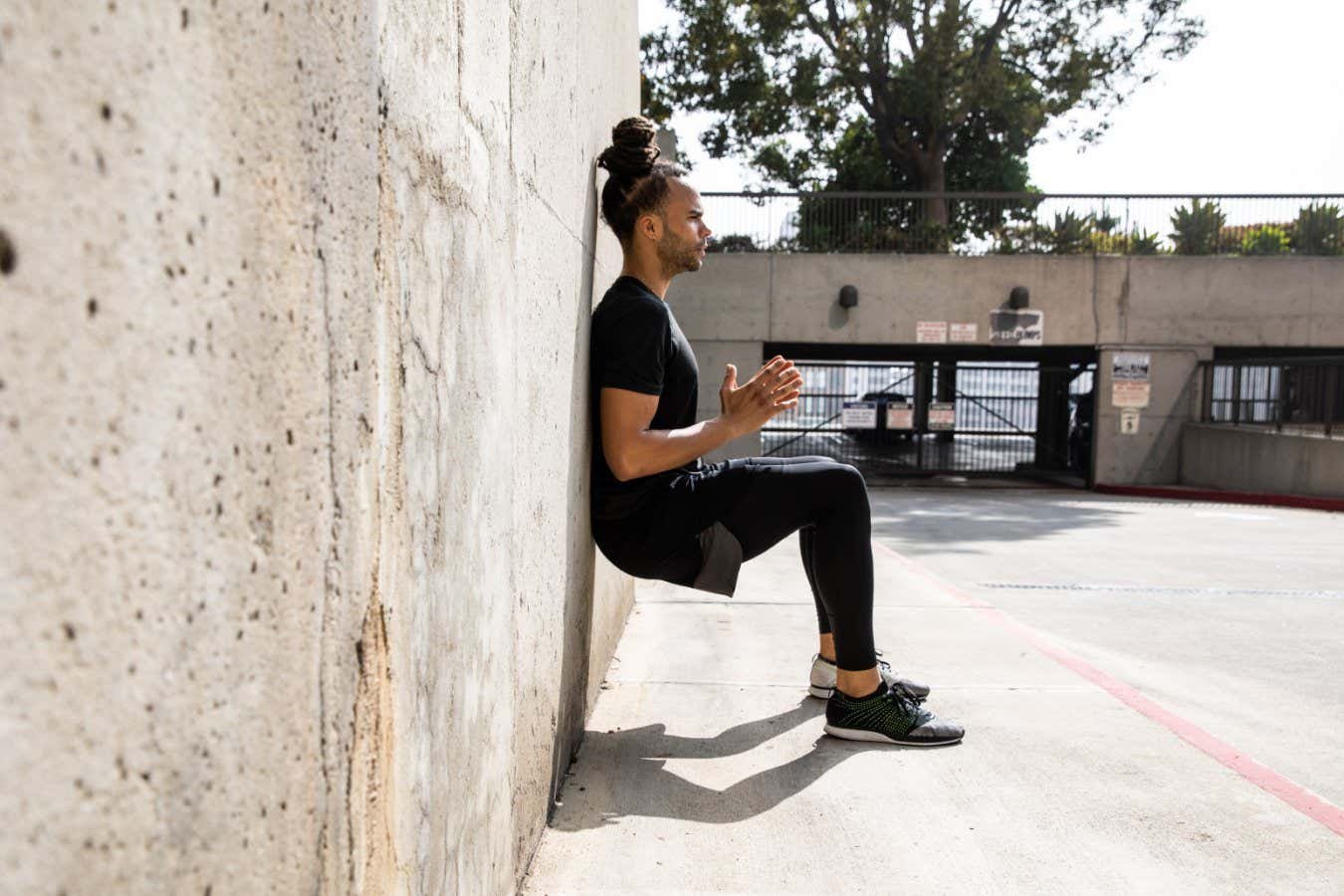
Should wall sits be part of your workout routine?
LeoPatrizi/Getty Images
I never thought much about my blood pressure, but recently my doctor suggested I start monitoring it more closely due to some of the medications I take. While it is still well within the normal range, it has slowly crept up, making me wonder what I can do to keep it in check. After all, high blood pressure is one of the most common health problems, affecting an estimated 1.28 billion adults. Left unmanaged, it raises the risk of various conditions, such as heart attack and stroke.
Exercise is widely recognised as one of the most effective ways to lower blood pressure. Most public health organisations recommend 150 minutes of moderate-intensity aerobic activity a week, such as jogging or cycling, to help keep it in check. Yet many recent studies suggest this may not actually be the most effective approach.
One of the most convincing findings comes from a 2023 analysis of 270 randomised controlled trials, involving almost 16,000 adults. Each trial investigated the effects on blood pressure of an exercise regime lasting at least two weeks. The analysis showed that every type of workout – from aerobic activity to resistance training – significantly reduced blood pressure compared with control groups.
However, isometric exercises such as wall sits and hand grips, in which a muscle is tightened in a static position, reigned supreme. On average, they lowered systolic and diastolic blood pressure by 8.24 and 4 mmHg, respectively, an effect similar to blood pressure medication. A drop of this magnitude is associated with up to a 22 per cent lower risk of a major cardiovascular event, such as a heart attack or stroke, for at least a few years. Aerobic exercises had almost half the impact.
The difference is probably to do with how isometric exercises affect blood flow. Think of wall squats and planks: they involve holding muscles in a contracted position for a minute or two. Squeezing muscles for that long temporarily reduces blood flow to them. When they are then relaxed, vessels widen, allowing blood to rush back in. This lowers blood pressure for several hours, and the drop becomes sustained with repeated exercise.
What makes isometric workouts even more appealing is that they are relatively easy to fit into your routine. A 2023 study found that just 12 minutes of these exercises three times a week for 12 weeks was enough to significantly reduce blood pressure.
Now, I don’t want to suggest we forget about other types of workout. Aerobic exercise and resistance training are still important for cardiovascular health and building muscle. But if you aren’t seeing your blood pressure budge, it may be worth adding an isometric move or two to your workout routine. I, for one, will definitely start incorporating wall squats into my leg day.
Grace Wade is a health reporter for New Scientist based in the US
For other projects visit newscientist.com/maker
Topics:




